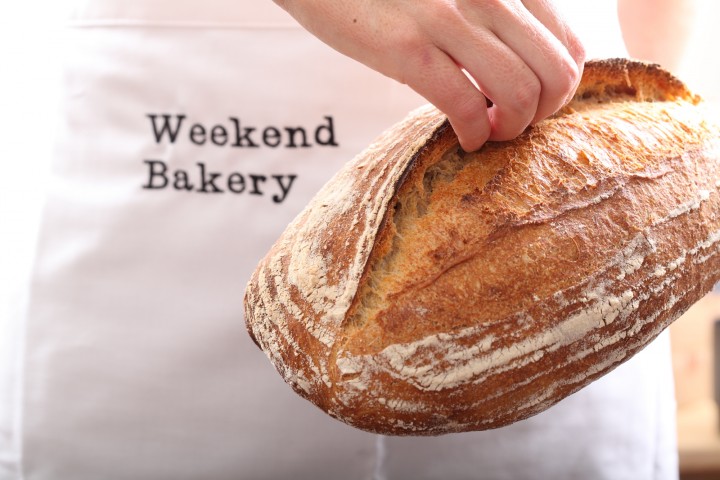
Let your dough scoring knife do the work, as you’re scoring, slashing or docking your way to an ear!
Scoring is slashing the dough with a blade or a sharp knife to allow it to expand during baking. The purpose is primarily to control the direction in which the bread will expand during “oven spring.” Easier said then done! I found that out as I tried to score my first loaf. And the second was even worse.
Scoring bread has a lot to do with confidence. Sometimes you feel very confident and sometimes you don’t. Hesitation will result in tearing and you can forget about lifting your loaf by its ear.

But there are some useful tips to help you:
- Make sure your blade or knife is very sharp
- Make swift and confident slashes, but at the same time be gentle (iron hand in velvet glove).
- Let the knife do the work. Don’t press down on the dough.
- Wet the blade in water between slices (especially when working with sticky dough).
- If you want to create an “ear,” the knife blade should be held at a shallow angle (about 30 degrees) with the surface of the loaf, about 0.6 cm/ ¼ inch deep.
- Practise, practise, practise, bake, bake , bake, score, score score!
Tips from other bakers you might want to try:
- Some people spray their knife with cooking spray or oil just before scoring. I tried this myself with spray oil on my own lame and I recommend you give it a try, it cuts just that little bit easier through the dough.
- Drawing the pattern you want to make on paper before you use it on your bread. Like someone did with a paper towel roll before putting it into practice on a baguette.
- Check out this video of how to and how NOT to score a baguette, very informative!
- Another great instructional baguette scoring clip is this one from King Arthur flour


Our own (designed by Ed) WKB bread scoring tools are available in our webshop. You can find them here!




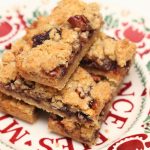
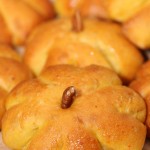
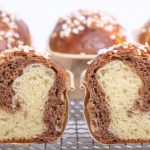
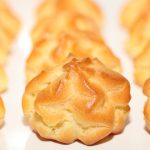



Mark Williams says
I use fairly soft doughs in my sourdough, and once tipped out of the banneton, they start to spread. I have tried slashing straight away, but this often deflates the loaf, and tried again when the loaf has had just five minutes to ‘skin'[ in the oven, which works better. But I’m still woefully short of getting really good expansion into the slash. #witsend
Maria-Theresa says
Hey there! Do your store the dough in the fridge or on the kitchen counter? I had the exact same problem. I would store the dough in the fridge overnight, then take it out on the counter for an hour or two before trying (and failing) to score and bake. Recently though I learned from a website (danish one), that you should score and bake the dough straight out from the fridge, since the structure will hold when it has been cooled. I have had no problems scoring since, the dough keeps its shape and the blade goes way easier through the dough 🙂
Elsewise, maybe the hydration percentage in the dough is a little too high? Maybe try with a little less water in the dough, so it won’t be too soft?
Finally it could be that the gluten network isn’t strong enough (or maybe it has been overworked and therefore ripped apart). Do the gluten test on your dough to see if it has been “beaten” enough.
I am but an amateur, but I hope, it was somehow helpfull. Happy baking! 🙂
Dave says
Maybe under or over proofed
Timing is everything but getting enough tension and strength in the loaf is crucial
Try lowering hydration to 70% and do an overnight 10 hour worktop bulk then knock back and shape for the banneton and leave out for around 40 mins shaped whilst oven gets screaming hot
Bake at 250 degrees in a Dutch oven for 39 mins and uncover for another 20 mins at 200 degrees
Weekend Bakers says
Thanks for your advice Dave!
Suzy Gorme says
How do I cut heart shapes into my bread dough? I saw a picture on William Sonoma and it looked ready cool.
DeLynn Smithers says
While studying how to score Bread, I noticed that all the loaves looks as though they been heavily floured before scoring. Does this make a dryer bread top for better scoring?
Weekend Bakers says
Hello DeLynn,
The answer could be yes and no. We are not the heaviest of flouring bakers, but too much could also hinder the scoring we think. The drying out of the top does help people with their scoring we know, but prefer our dough not to dry out and we rely on a very sharp blade, swift and decisive action and guidance with our hands of the dough. In short, in the end it should not really matter if there’s flour on top, you would still be able to score the dough well.
Enjoy the process and the baking
Darren says
Hi
I always make a mix of white/wholemeal but during baking it tears badly ( I add steam to my pot) can I do anything to stop tearing massively?
Weekend Bakers says
Hello Darren,
Our suggestion would be to score deeper and also over the full length of the bread, really well from side to side. You need to make your scoring the weakest spot where the bread will open. The tears indicate your scoring might be a bit too shallow. Also make sure your bread is well enough proofed before baking.
Carole says
I have found that the dough tears while rising, so by the time I’m ready to score prior to baking I’m not able to have the nice regular score cuts. Is there something I can do to stop this happening?
Weekend Bakers says
Hello Carole,
What flour type and recipe do you use and at what temperature is your dough proofing?
nancy A rutstein says
thanks I have a pretty good lame with a new blade but I find that it rips through the dough not slices.
what can i do ?
Weekend Bakers says
Hello Nancy,
Because you describe your blade is new and sharp, we think you just need to practice some more to make faster / ‘swifter’ and decisive moves with the blade. Use some oil on the blade to make it easier and guide the dough with your hand /fingers a bit to counter the movement of the blade. Every loaf is a new chance to practice, it is a skill, like many others that takes some time to get right.
Daniel says
Tried these for the first time today. They worked out very well.
One difference by me. When ever I use the standard amount of water when doing the Sourdough Bread, the mixture is always very soggy and sticks to you like limpets. When I use the normal bread water content i.e. 1: 1.66 or 600g water to 1000g flour it is much better top handle. So I reduced the water content by 100g on this recipe. Very satisfied with the result. Many thanks!
Weekend Bakers says
Hi Daniel,
It is always best to try a recipe as stated and after that see what needs to be altered to make it your own. There will always be adjustments, even with your own versions, you will see you sometimes need to change the hydration just a bit with the seasons or with a new sack or brand of flour for instance. And as long as you are satisfied with your own bread, that is the most important thing of course.
Wishing you lots of baking joy and crusty loaves!
Marieke & Ed
Weekend Bakers
Chris says
Hi. I am looking to do those white straight lines presumably made from some sort of flour duster. Thank you.
Weekend Bakers says
Hello Chris,
The lines are made by putting the loaf in a proofing basket / banneton made of cane that has been prepared with flour. You can see how this works here:
www.weekendbakery.com/posts…-banneton/
Rachel Frampton says
I love bread and always found scoring to be very pretty looking. I had no idea it actually served a purpose until I read your article. I’m not much of a baker, but I found it really interesting to learn the bread scoring is to control the direction the bread will expand. I like the suggestion to draw a pattern you’d like to score on a piece of paper before you do it on the bread. Thanks for the great information.
Douglas says
I’ve gotten better at scoring, but I am curious, does it hurt the final result if during your scoring the bread degasses a bit? If so, any tips on how to avoid this when using the lame?
Weekend Bakers says
Degassing is perfectly normal (a certain amount) and you should not worry about it, provided you use the right bread flour and your dough has the capacity to spring back in the oven.
You can also see this in our short video here (this is from quite a few years back, but the time lapse oven spring is still fun to watch): www.weekendbakery.com/posts…the-movie/
So make sure you use the right flour, proof to the right point and use enough steam in your oven to make a good oven spring possible.
Also check out our oven and stone oven tips:
www.weekendbakery.com/posts…your-oven/
and
www.weekendbakery.com/posts…ven-users/
Vinko Sakota says
I’ll see.
Joy says
Do I score after the second proving ?
Weekend Bakers says
Hi Joy,
Scoring is done after the final proofing just before you take the bread to the oven.
Enjoy your baking weekend!
Grant says
The only way I’ve been able to make good bread is using Wrights Flour and with an Oven with lots and lots of moisture. So the Wrights Flour for whatever reason just stays in position, it doesn’t fall flat, you can bake it without any support. The problem I’ve been having is stopping the Bread from growing sideways and just being flat, because the process of moving the Bread just ruins it. However the Wrights Flour just seems so strong and it just keeps expanding and expanding no matter what.
The Humidity thing, I could only get with a fire Oven, putting a bowl of water in there and then when it’s all steamy, putting the bread in. A Fan oven is useless. I could never get anything good out of it, it also grows the Bread to one side which is annoying.
I spent years trying everything out, I just wouldn’t bother with a Fan Oven, I’d just buy a Bread Maker and good flour like Wrights… don’t bother listening to people who say you just need four, salt, butter, water, yeast and Sugar…. it’s BS, every bakery has to be putting something in the flour to make it so big and light.
Grant says
Also never cut the bread just before you’re putting it into the Oven IMO.
If you do it early and then let it rise, it works so much better. If you do it just before, your bread just dries out and it shrinks instead of rises. If you put the bread in the oven without letting it rise, you just end up with a flat bread.
Those Tins with lids on work amazingly for Fan Ovens, they keep the moisture in, but you will end up with a rectangle store like bread.
I’d also recommend doing multiple loaves on a tray, that way they support each other and rise instead of going flat, but you need to find one that’s like 2 inchs tall around the outside to support the outer loaves.
I watch these Youtube videos saying “easy no knead bread” or whatever, but their Ovens are made for making bread and they lie about their flour. You try it yourself and the results are so different…
Weekend Bakers says
Thank you for your insights Grant. We think the beauty of baking your own bread is you do not have to put anything in your bread you do not want to, especially enzymes and ‘bread improvers’ that are not particularly good for you. We are quite happy with our baking results, using only the basic ingredients, even if our buns are a bit less fluffy than the bakers’, because of the time and care and attention we can give to them (a luxury a baker often does not have) we end up with tasty results.
Hope our scoring tips are useful to you in creating the right weak spot in your loaf so it tears where you want it.
Jacob Evenich says
No grant you need to do some more R and D. For those of you reading this do not loose heart. The only ingredients you need are flour, water, salt and yeast or a natural levean. No oil, milk or butter and nothing added to the flour. What is most important is developing good dough strength and elasticity, and properly fermenting your dough. Of it is over proofed it will be a mess. If it is under proofed it won’t spring well. You can definitely make great free for artisan bread in a home fan oven. Using a combo cooker or Dutch oven is the best but a good thick baking stone and a tray full of lava rocks and water will work great too. If using a baking stone turn fan off if possible. And definitely always slash/score right before you put the bread into the oven. Not before the final rise. The persons skill is what makes good bread even more than the ingredients and equipment. Preshaping and shaping should be done with a confident but gentle hand. Practice practice practice
Ann says
I love to have one of this gadget but where to get.I am from Malaysia
Weekend Bakers says
Hello Ann,
Thank you. We do ship these lames all over the world (also to Malaysia, at lowest possible shipping costs). You can check them out here: www.weekendbakery.com/websh…-lame.html.
Happy baking,
Marieke
Lauren says
I had the same problem when I started baking and found that the problem came from overproofing. The bread had simply been proofing to long and I had to go back and read, read and read. Find the right temperature for proofing, autolyse time and make sure I was not letting it sit to long, if I had to let it rest (just got really overworked) during the kneading process. Stretch and fold and time in between for wet dough and so much more. I never imagined the amount of things I had to take into account. Anyway, once I did, I never had another collapse at scoring. Good luck.
Weekend Bakers says
Hi Lauren,
Thank you very much for your helpful addition to this posting. You are right, it is a complex of things to take into account and lots of skills to make your own when learning to bake, but it is always worth it we think!
Alexander Broekhuis says
Question about scoring, I’ve tried it a couple of times, and the cut itself is mostly ok. But when baking the bread, it often tears at one side.
What can I do about this? Can this be because of my small oven and using hot-air, so that the top of the bread is baked to quick?
And something not related to scoring, most recipes use a starter, but what amounts should I use if I don’t want to make a starter (or forgot)?
Thanks for the recipes!
Weekend Bakers says
Hi Alexander,
Heat air is certainly not ideal when wanting to create big ears. You need to create lots of steam to try and keep the crust form drying out in the first minutes of the baking process, this is the only way the bread can expand.
And it is not really possible to leave out a starter and still have a good working recipe, the balance would not be right, so you should change to recipes without starters and use them. If you forgot, we would suggest to just bake the next day.
Jeanne McCool says
When should I do scoring? I have the same brea-splitting-at-the-side-while-scores-don’t-move problem. I have used a steamy oven as well as oiled loaf top. Should I score seconds before putting the loaf in, or score and wait, say, 20 minutes? The slats look so nice, and I want my loaves to be taller! Help!
Weekend Bakers says
Hi Jeanne,
You should score indeed immediately before the bread goes into the oven. Do not wait. The angle and depth are very important so you really create the weakest spot in the bread were it will open. Start with one big score over the total length of the bread and really cut from side to side so you have the most chance for the loaf to open. Use enough steam, you really need lots of steam and it needs to stay in the oven during the first crucial minutes of the baking process.
Christine says
I love you guys , please keep posting .
Weekend Bakers says
We were a bit behind because we had to move house recently, but we just posted another recipe (seasonal pumpkin buns) and there will be more now we can focus on the baking again!
Thank you so much and happy baking!
Ed & Marieke
Jean-Raymond Simard says
Hi,
I live in Canada and I’m looking for a bread scorer. I saw some break scorer like those in a store and would like to get your opinion if it’s a good buy or if I should go with a traditional razor blade.
I’m getting good results with a very sharp knife like a flexible fish fillet knife, except for dough covered with seeds like sesame (the seeds prevent the blade from cutting in the dough!). Also getting a proper depth is a problem, so I’m looking for something more “professionnal”.
Thanks in advance,
JR
Weekend Bakers says
Hi JR, we use our own bread scorer which we sell in our shop which works very well for us. It is a holder for sharp double edge razor blades which you can replace. Most ‘plastic’ build-in kind of bread scores are not as sharp as a holder with the razor blades.
See; www.weekendbakery.com/websh…-lame.html for our lame and we do ship to Canada for 3.95 euro!
Happy baking!
Petra Robinson says
I just ordered the Lame, just so glad you ship to the UK:)
Weekend Bakers says
No problem! Thanks for your order.
Linda Jo Horton says
When do you score bread? Before it raises or after
Weekend Bakers says
Hello Linda,
You score bread just before it goes into the oven so after the final proofing.
Happy Baking,
Marieke
Paul says
Beginner’s tip for scoring.
Hello Marieke & Ed
While waiting for some new equipment from you ( it arrives the next morning every time and in the meantime there’s updates and chat: amazing web-shop-service) here’s something I want to share about learning to score bread.
Although I am kind of a kitchen- and utility-knive freak (so that’s the pacifist variety), I could not get the slashing quick and clean untillI I tried -and I hate to admit I had one hidden- a hobby, snap-off type knive. The kind you use for cutting paper and cardboard. For me it worked every time and I start to get the right feeling so after some more practice I’m sure a real bread lame or blade will work too and probably still better. It’s just like learning to ride a bicycle with – to start you off – side-wheels attached and way more elegant than scissors!
Weekend Bakers says
Thanks Paul for your suggestion! That’s a great comparison…with side-wheels attached.
Let us know when you make the transition and you remove the wheels!
Happy Baking!
Marieke & Ed
Brendan says
Hi,
I’ve just started baking recently. I’m practising bloomers. The problem I have is that the bread deflates when I score it. It doesn’t really rise again during baking and I certainly don’t get “ears”. What am I doing wrong?
Thanks,
Brendan.
Weekend Bakers says
Hello Brendan,
Deflating can very well be a sign of over-proofing so check your dough regularly (finger poking test) to see if it is ready for the oven. You can find helpful tips here: www.weekendbakery.com/posts…e-in-size/
Next to that you have to take into account the recipe you are using. As far as we know a bloomer is a straight dough recipe with a lower hydration dough. This, in combination with flour and techniques used, can make it virtually impossible for your loaf to get ears. There are certain types of bread that develop ears more easily than others.
Finally it is very important to create enough steam in your oven for that all important oven spring to happen. When we talk to home bakers, in a lot of cases we find that they do not create enough steam. You can find our tips on how to create more steam here: www.weekendbakery.com/posts…your-oven/
Hope this will help you a bit. And maybe you can give our favorite Pain Rustique a try and see how that turns out. You can find the recipe here: www.weekendbakery.com/posts…-rustique/
Happy Baking,
Ed & Marieke
Brendan says
Thanks for the tips, guys. I will definately make use of them in my future breads. Looks like I should invest in a thermometer too.
I’m still practising the bloomer. This is the recipe I’m using:
500g/1lb 2oz strong white flour, plus extra for kneading
10g/¼oz salt
1 x 7g sachet of instant yeast
320ml/11½oz cold water
40ml/1½fl oz olive oil, plus extra for kneading
extra oil and flour, for kneading
It’s a BBC TV guy called Paul Hollywood. His shows inspired me to try. He uses the “doubled in size” line too. He says to prove it for 1.5-2 hours twice.
The bread always tastes really good but the texture is different every time 🙂 Sometimes it’s very light. Others it’s quite dense.
I think I would like to practise this until I master it and can understand everything that’s happening but I will definately try your bread soon. It’s probably good to try different things.
Thanks again,
Brendan.
Weekend Bakers says
Hi Brendan,
Maybe it is helpful to keep an eye on how much flour you add during kneading because if this is different every time it can also give a different result every time (with this recipe that states to use ‘extra flour for kneading’ you probably never know exactly how much you add and thus alter the structure of the bread). You are very right to try different things and techniques to get to know them but at the same time also stick to one recipe, really dive into that to get it just right. That is what we do too. We stick to a recipe for a while, bake and bake, make notes, alter just one thing at a time and see what result that yields before moving on.
We take it you have seen our piece about the myth of double in size (www.weekendbakery.com/posts…e-in-size/). Lots of people stick to what they have learned at one point so lots of bakers still automatically refer to these things. It is the same with the ‘do not let the yeast come into contact with the salt’ thing. This is only true when yeast and salt are combined in a wet environment for a while but you don’t have to panic and keep them apart in your bowl of flour when seconds later you are starting your mixer and combine them anyway.
Hope you will be inspired by our recipes too and let us know if we can help you with anything.
Happy Baking!
Ed & Marieke
Brendan says
Hello again,
I will keep these things in mind, thankyou.
I have actually been kneading by hand 🙂 I’ve baked the bloomer 9 or 10 times now and a few simple wheaten breads. I’m Irish so learning wheaten bread is just necessary. I’m getting better. I think I need to have more control over all the variables. Get scientific about it. Proving time and temperature are probably two I can improve on a lot! Steam escapes from my oven too so I’ll see if I can do something about that.
Thanks for all your great tips. You help a lot because I don’t have someone here who knows what they’re talking about :). I need you guys!
Weekend Bakers says
We hope to stick around for quite some time so you can talk bread with us some more no problem!
Ed & Marieke
Naouar says
Hallo,
Ik wil een bestelling plaatsen bij jullie en kan me herinneren dat jullie in het verleden ook een oil spray verkochten. Krijgen jullie die nog in et assortiment of kunt u mij anders adviseren waar ik deze kan kopen.
Alvast bedankt
Weekend Bakers says
Beste Naouar,
Wij hebben deze spray bijna zeker aanstaande maandag weer op voorraad.
Ik zal nog even een bericht sturen zodra de spray weer via de shop te bestellen is.
Nog een heel prettig weekend,
Marieke
Weekend Bakery
Nancy says
How do you make the round shape (cirle) in the picture above? I assume this is not scoring but the way you put the flower on the dough?
You have a great website!
Weekend Bakers says
Hello Nancy,
Thank you very much!
I think you mean the imprints of the flour on the loaf made by the proofing basket the bread is proofing in before baking. These are made of wicker or cane and are also called bannetons You can see them here: www.weekendbakery.com/webshop/
Marieke
Mapi says
Thanks for the tips!! I’ve been baking bread for a while now but still don’t get the “ears” that you mentioned. How deep are the cuts that you make?
Weekend Bakers says
Thank you Mapi!,
The simple answer to your question would be about 0,5 cm / 1/4 inch, cut at an angle like it says in the tips.
But it does not mean that if you cut at the right depth, you automatically get ears unfortunately. Getting good oven spring, using steam, baking on a stone are all elements that help toward bloom, nice crusts and ears. And not all types of doughs/ bread are suited for creating ears. Highly elastic, wetter types of dough are best and using preferments will also help you in the right direction. So all these elements must come together first and then you just practice and bake a lot of loafs and practice some more…
Maybe you already know this tutorial?
www.thefreshloaf.com/node/…ted-122009
If not, it contains a more elaborate story on the subject of bread scoring. Very informative!
Wishing you lots of loafs with nice ears and happy baking,
Marieke